Making the invisible visible this Neurodiversity Celebration Week
Have you ever looked at someone in the grocery store who seemed perfectly fine but was using the accessible parking space? Or wondered why your coworker attends frequent appointments during work hours when they “look healthy”?
Many people have these thoughts until they learn about invisible disabilities and how profoundly they affect millions of lives worldwide.
What exactly is an invisible disability?
An invisible disability can be described as a physical, mental, or neurological impairment that isn’t visible from the outside. Just because you can’t see it doesn’t mean it’s not there.
The statistics are eye-opening: globally, 1 in 6 of us live with a disability. That’s approximately 1.3 billion people across the world.
While some experience visible disabilities, many live with conditions that aren’t apparent to others, or they navigate a combination of both visible and non-visible challenges.
These invisible disabilities come in countless forms, they could be:
- Neurological conditions like multiple sclerosis or epilepsy
- Chronic illnesses such as fibromyalgia, lupus, or Crohn’s disease
- Mental health conditions including anxiety disorders or depression
- Cognitive and neurodevelopmental conditions like ADHD or autism
- Sensory processing difficulties
- Respiratory conditions such as asthma or COPD (chronic obstructive pulmonary disease)
- Chronic pain or sleep disorders
And many more that often go unrecognised… and as everyone’s awareness of invisible disabilities grows, so does the list of conditions recognised under this umbrella.

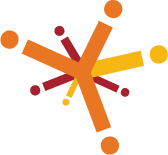
supporting COMMUNITY with invisible disabilitIES
At Caringa, we’ve learned valuable lessons from supporting people with invisible disabilities:
Learning to accept that some conditions cannot be “fixed” is essential. Many well-meaning supporters initially approach invisible disabilities with problem-solving mindsets, creating lists of potential solutions and researching treatments. However, most people with chronic conditions have already explored available options extensively.
Often, what’s needed isn’t a solution but understanding and acceptance. The person with fibromyalgia, chronic fatigue, or mental illness is already trying everything possible; if there was an easy solution, they would have found it long ago.
Supporting someone with an invisible disability means acknowledging their reality and providing compassionate presence rather than constantly seeking to solve what may not be solvable.
Understanding leads to compassion.
At Caringa, we believe that the more we understand the wide range of non-visible disabilities, chronic illnesses, and health conditions that affect our community members, the more we can all be aware of diverse access needs.
Next time you see someone with a Sunflower lanyard, or notice someone who needs accommodations despite appearing “normal,” remember: invisible disabilities are real, valid, and deserving of understanding and support.
We’d love to hear your stories and continue this important conversation:
Have you had experiences with invisible disabilities, either personally or through someone you care about?
What has that journey taught you about compassion and accessibility?

Neurodiversity Celebration Week March 17-23, 2025
A Week to Embrace Neurological Differences
From March 17-23 it’s Neurodiversity Celebration Week. This international week encourages communities worldwide to come together to celebrate the unique strengths and talents that come from thinking differently.
What is Neurodiversity?
When we talk about neurodiversity, we’re referring to the natural variation in human brain function and behavioral traits.
Depending on how our brains are wired, we all think, move, process information, and communicate in different ways.
Many people use neurodiversity as an umbrella term to describe alternative thinking styles such as:
- Dyslexia
- DCD (Dyspraxia)
- Dyscalculia
- Autism
- ADHD
But neurodiversity encompasses much more than labels—it’s about recognising and respecting those who think differently. Did you know that approximately 15-20% of the population has a neurological difference?
That’s one in every five people.
Changing the Narrative
Neurodiversity Celebration Week aims to change the narrative around how people are perceived at school, home, work and everyday.
Instead of focusing on deficits or disorders, the neurodiversity paradigm takes a balanced view of each individual’s unique strengths and challenges. Many of the “challenges” neurodivergent people face actually stem from environments and systems designed by and for the neurotypical majority, not from the neurological differences themselves.
And no matter whether you are a school teacher, employer, friend, sports team member or organisation; you can benefit from different thinkers!
- Creative problem-solving
- Pattern recognition
- Detail orientation
- Out-of-the-box thinking
- Hyperfocus capabilities
- Visual-spatial thinking
- Specialised knowledge in areas of interest

If we work together, there is no limit to the change we can make
This Neurodiversity Celebration Week, let’s commit to building environments where all minds are valued, not despite their differences, but because of them. If we work together, there is no limit to the change we can make.
Remember: The goal isn’t just awareness—it’s acceptance, appreciation, and meaningful inclusion.
Here are some ways everyone in the community can participate in Neurodiversity Celebration Week:
For Organisations:
- Conduct workplace training on neurodiversity awareness
- Review and adapt recruitment processes to be more inclusive
- Create sensory-friendly work environments
- Establish mentorship programs for neurodivergent employees
- Share success stories of neurodivergent team members
For Schools & Universities:
- Host awareness assemblies featuring neurodivergent speakers
- Create sensory-friendly spaces
- Implement class activities that highlight different thinking styles
- Display informational posters celebrating neurodiversity
- Organise book clubs featuring neurodivergent authors or characters
For Individuals:
- Share your own experiences if you’re comfortable doing so
- Educate yourself about different neurotypes
- Support neurodivergent creators, businesses, and advocates
- Challenge stereotypes when you encounter them
- Practice patience and understanding when communicating with people who process information differently
For Everyone:
- Use the hashtag #NeurodiversityCelebrationWeek on social media
- Attend virtual or in-person events during the week
- Wear rainbow infinity symbol items to show your support
- Look for Sunflower lanyards, stickers or badges to be aware of your surroundings
- Start conversations about neurodiversity with friends and family
- Advocate for inclusive policies in your community

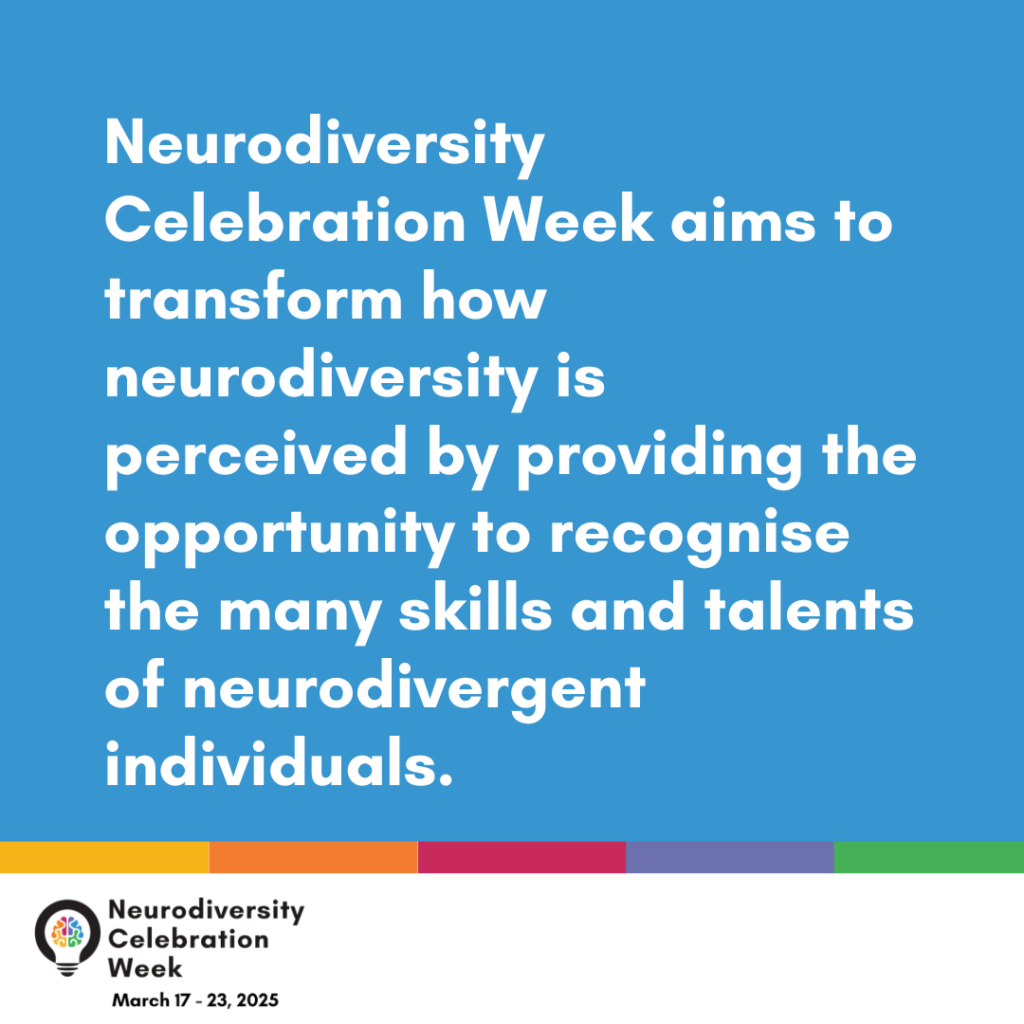

The Hidden Disabilities Sunflower program
The Hidden Disabilities Sunflower program aims to extend diversity and inclusion initiatives and foster a culture where employees and customers feel safe wearing the Sunflower to indicate they have a non-visible disability, condition, or chronic illness. It also encourages open discussions about disability. By joining the Sunflower program, companies can identify and address the needs of these customers and employees, improving their experience. This approach helps build loyalty, as people feel acknowledged and supported in a society that often overlooks their individual needs.
The Hidden Disabilities Sunflower program works towards creating a welcoming space for everyone.
Discover more with the The Sunflower Conversations here
Join the Sunflower Program and make a difference today for our community with hidden disabilities
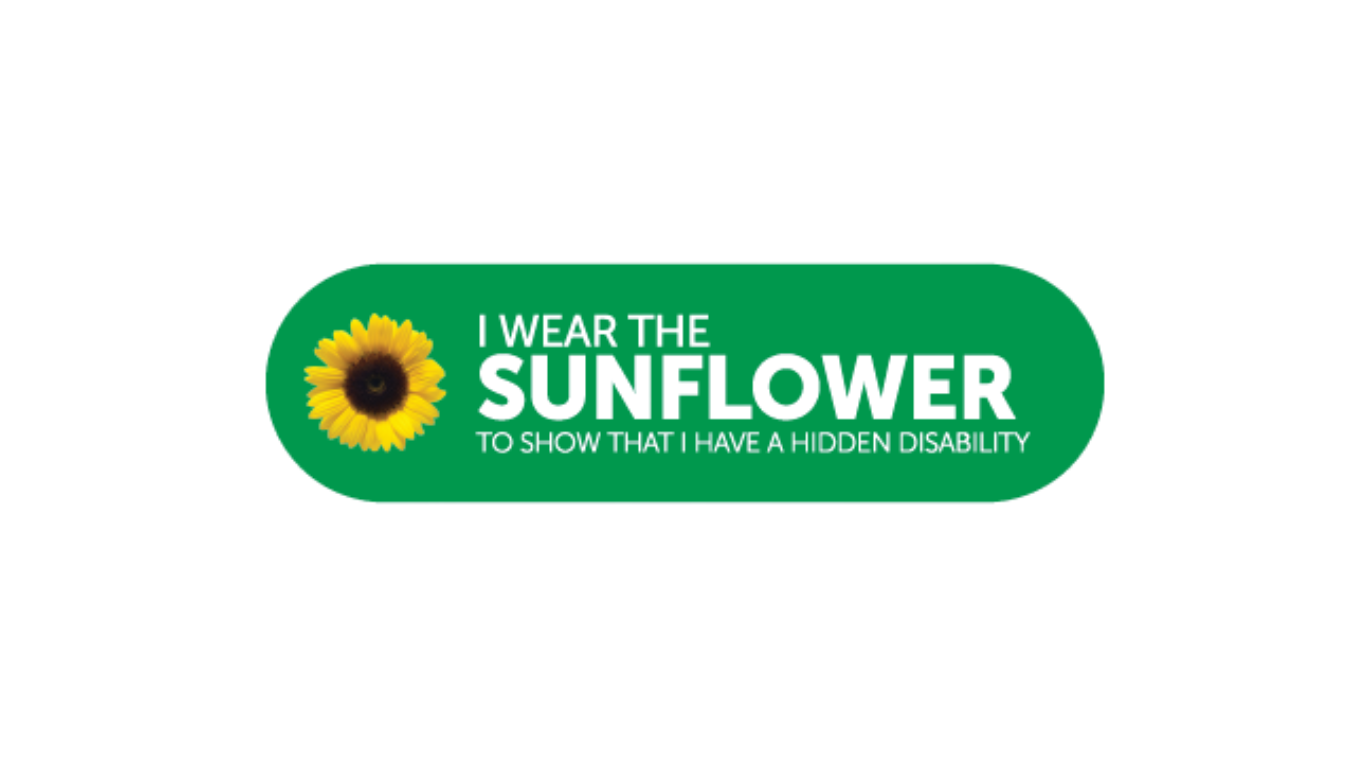
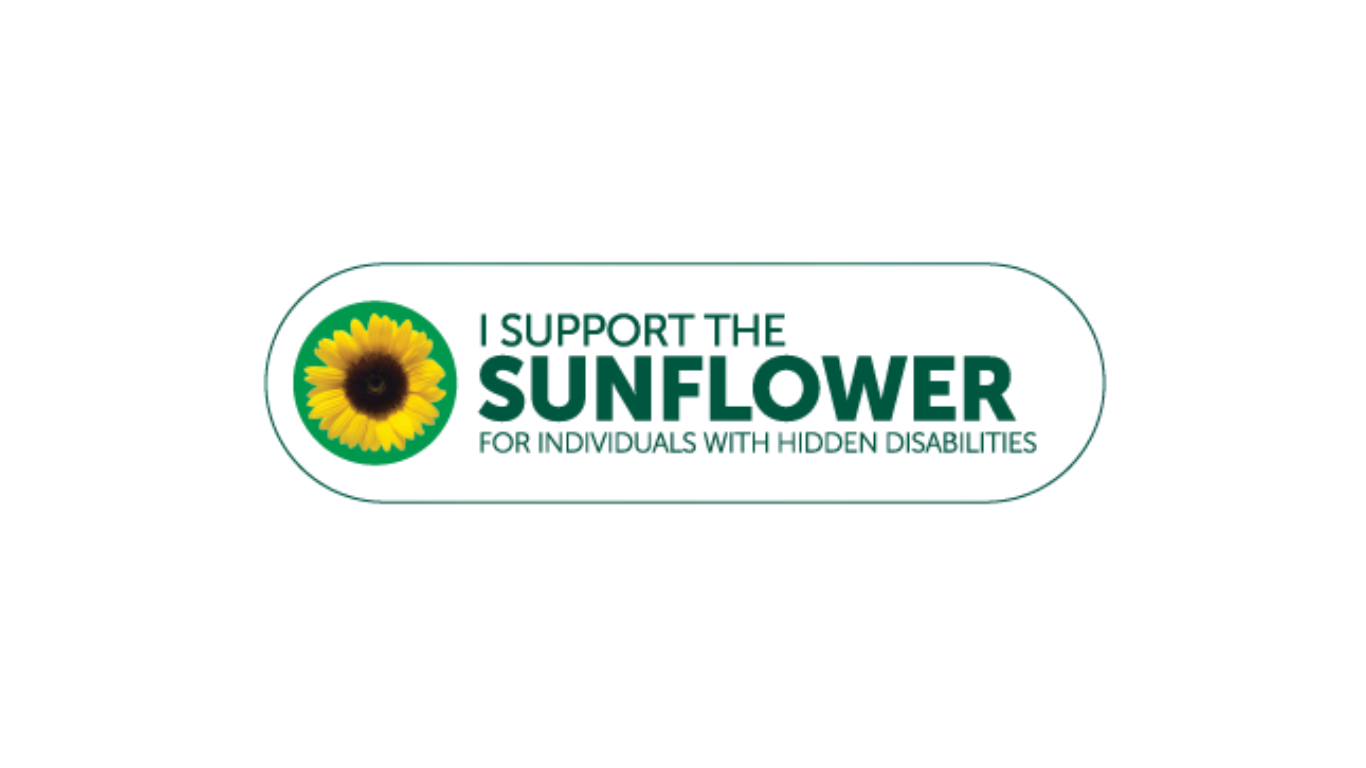




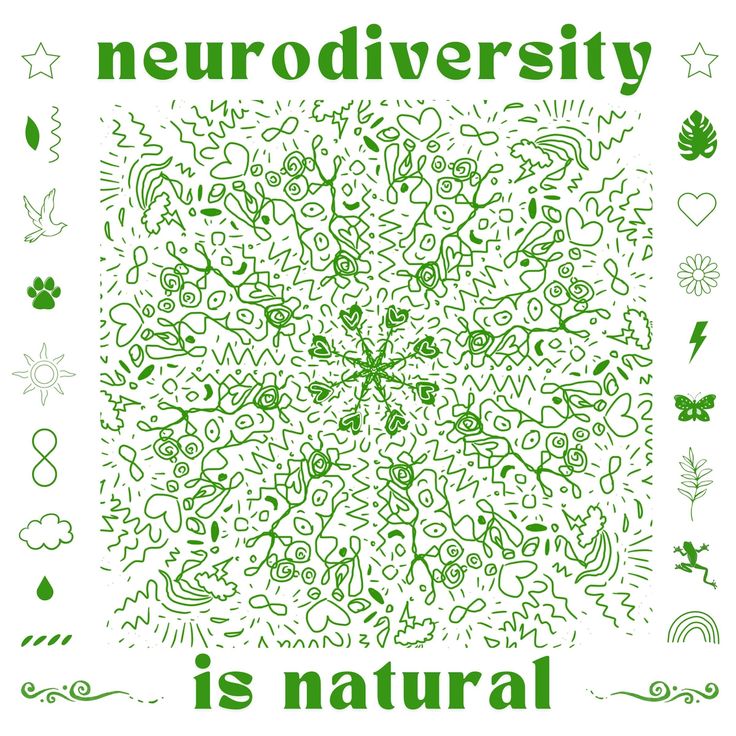
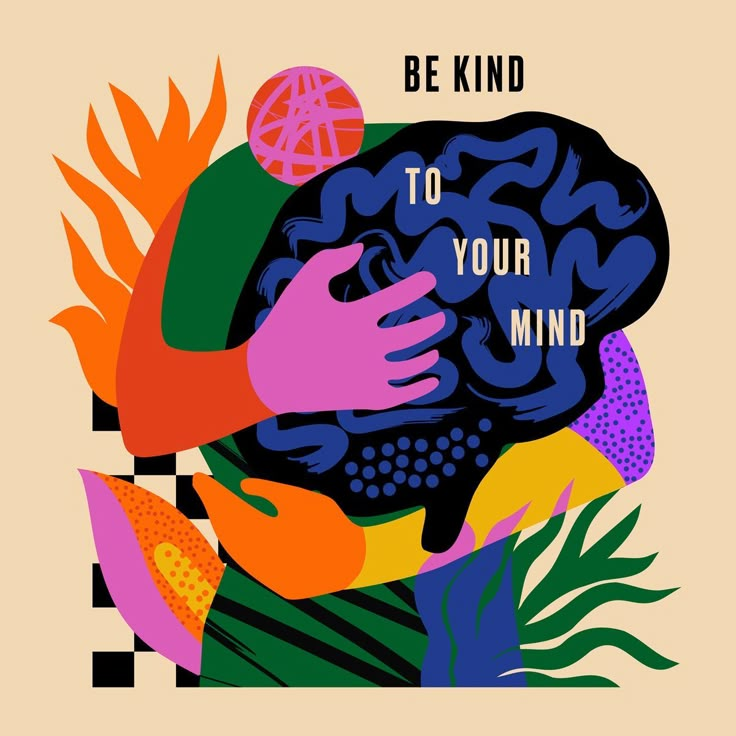
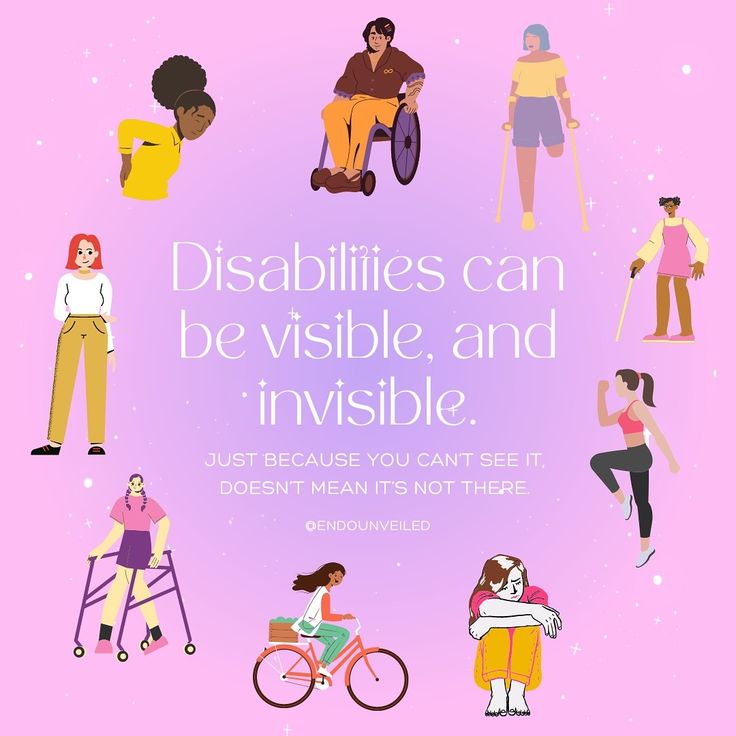
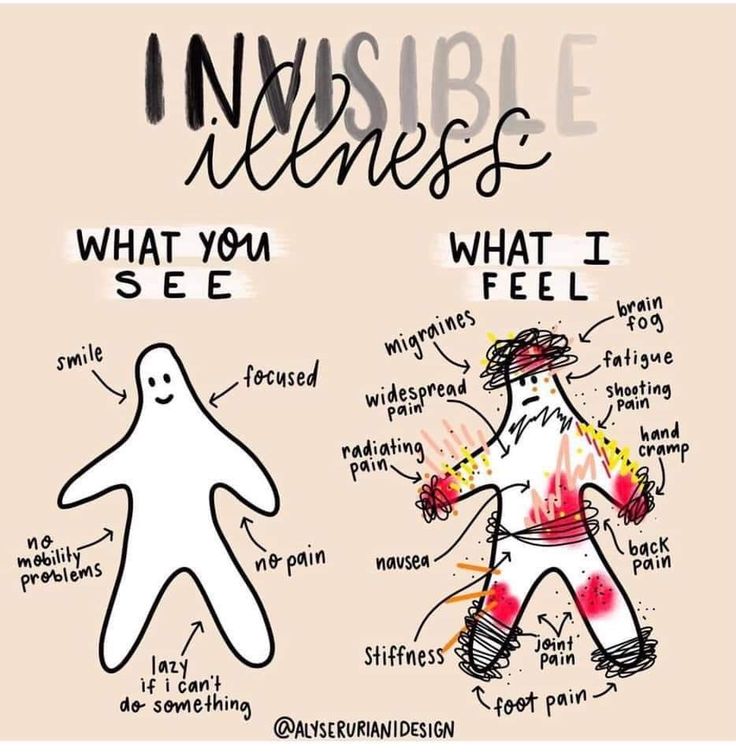



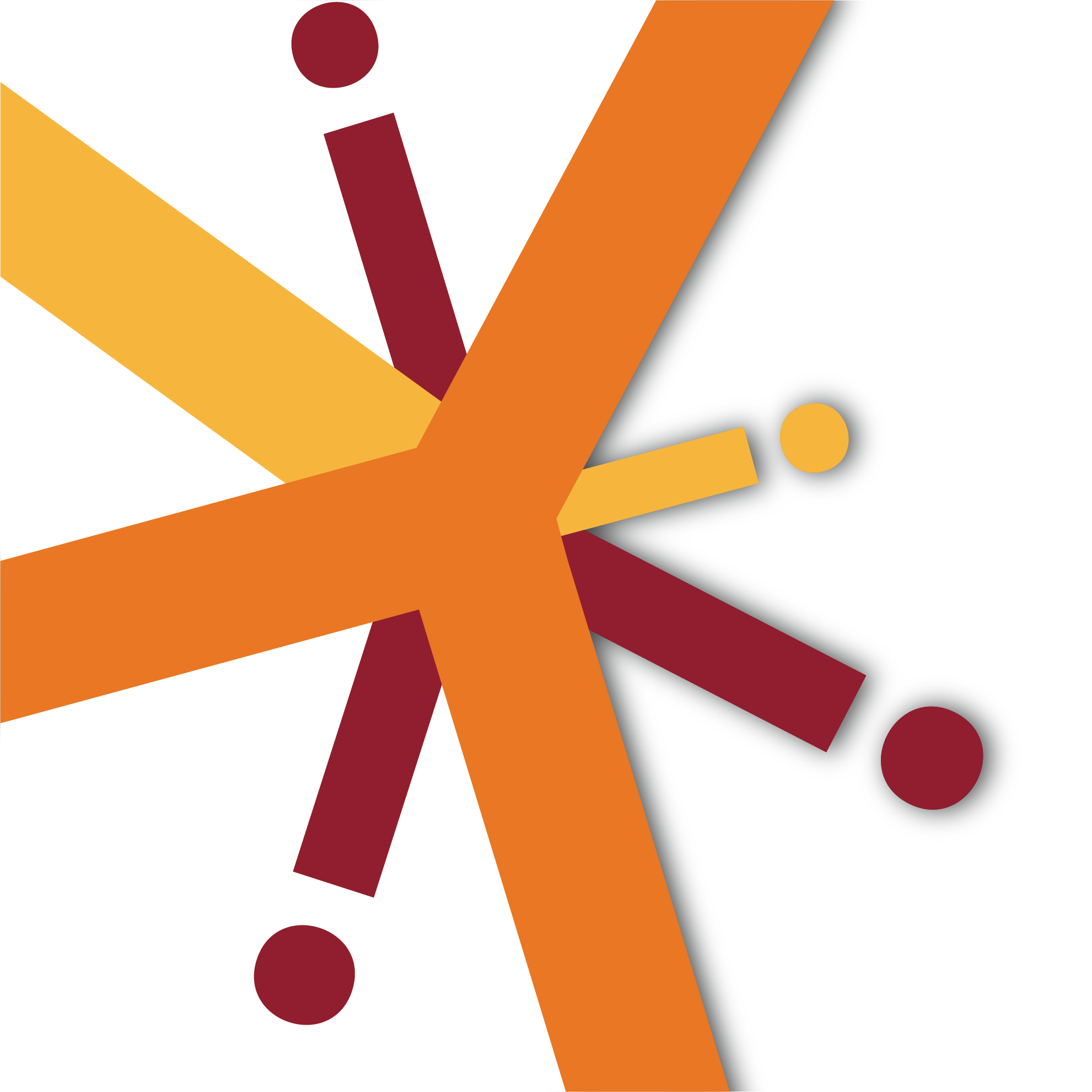

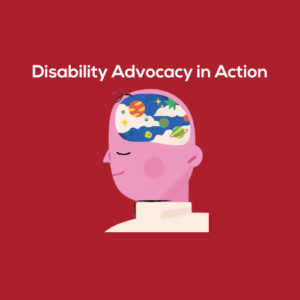

Leave a Reply